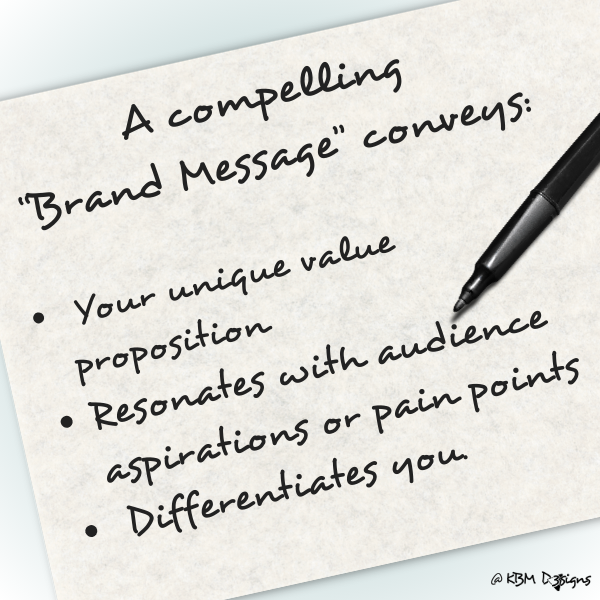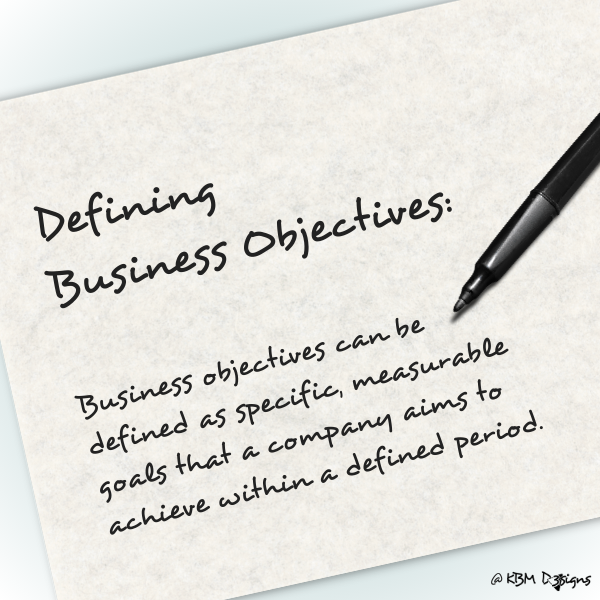What is a brand message? – And why is it so important for small businesses?
In the bustling world of commerce, small businesses often find themselves in the position of seeking attention. And they do so in the midst of larger competitors with seemingly unlimited resources. In this David and Goliath scenario, one of the most powerful tools in the small business toolbox is a well-defined brand message. Let’s explore this essential aspect of marketing strategy.

Defining the Brand Message
At its core, a brand message encapsulates the essence of what your business stands for and communicates it succinctly to your target audience. It’s the heart and soul of your brand distilled into a few words or a short phrase. A compelling message conveys your unique value proposition, resonates with your audience’s aspirations or pain points, and distinguishes you from competitors.
Article Content:
- Elements of a Strong Brand Message
- The Importance for Small Businesses
- Crafting Your Brand Message
- Is There a Difference Between a Brand Message and a Brand Story?
- Is a Brand Message Equivalent to a Slogan or Tagline?
- When and How to Use a Brand Messaging
- Frequently Asked Questions about Brand Messages
1. Elements of a Strong Brand Message
- Clarity: Your message should be crystal clear, leaving no room for ambiguity. It should succinctly convey what your business offers and why it matters to your customers. Ambiguous or convoluted messaging can confuse potential customers and drive them away.
- Authenticity: Authenticity is the cornerstone of a compelling message. It’s about being genuine and true to your brand’s values, personality, and promises. Customers are increasingly drawn to businesses that demonstrate authenticity, as it fosters trust and credibility.
- Relevance: Your message must be relevant to your target audience’s needs, desires, and pain points. It should resonate emotionally and intellectually with them, forging a connection that goes beyond mere transactions. Understanding your audience’s motivations is key to crafting a message that speaks directly to them.
- Consistency: Consistency is paramount in branding. Your message should remain consistent across all channels and touch-points, whether it’s your website, social media profiles, advertising campaigns, or customer interactions. Consistency reinforces your brand’s identity and helps build familiarity and trust over time.
2. The Importance for Small Businesses
For small businesses, a compelling brand message can be a game-changer for several reasons:
- Differentiation: In crowded marketplaces, small businesses often struggle to stand out. A unique and well-crafted message can help you carve out a niche for yourself, distinguishing your business from competitors and attracting customers who resonate with your values and offerings.
- Customer Loyalty: A strong message fosters emotional connections with your audience, leading to increased customer loyalty and advocacy. When customers identify with your brand on a deeper level, they’re more likely to become repeat buyers and brand ambassadors, spreading positive word-of-mouth.
- Perceived Value: A compelling message can elevate the perceived value of your products or services. By articulating your unique selling proposition and the benefits you offer, you can justify premium pricing and command higher margins, even in competitive markets.
- Long-Term Success: Investing in a well-defined message lays the foundation for long-term success. As marketing tactics evolve, your brand messaging anchors strategic decisions and shapes your company’s market perception.
3. Crafting Your Brand Message
Crafting a compelling message requires introspection, creativity, and a deep understanding of your target audience. Here are some steps to help you get started:
- Know Your Brand: Begin by defining your brand’s mission, values, and unique selling proposition. What sets your business apart? What problem do you solve for your customers? Clarifying these aspects will form the foundation of your message.
- Understand Your Audience: Conduct market research to gain insights into your target audience’s demographics, preferences, and pain points. What are their needs and aspirations? How does your product or service fulfill those needs? Tailor your message to resonate with their motivations.
- Be Concise Yet Compelling: Keep your message concise and memorable. Aim for clarity and impact, avoiding jargon or industry-specific language that may alienate your audience. Consider the emotional and rational benefits of your offering and distill them into a compelling statement.
- Test and Iterate: Once you’ve crafted your brand message, test it with your target audience to gauge its effectiveness. Solicit feedback through surveys, focus groups, or A/B testing to refine your message and ensure it resonates with your audience.
For small businesses looking to differentiate themselves, build customer loyalty and achieve long-term success, a compelling message is a powerful tool. By crafting a clear, authentic and relevant message that resonates with your audience. Then you can elevate your brand above the noise and forge meaningful connections that last.
4. Is There a Difference Between a Brand Message and a Brand Story?
A distinction exists between a brand message and a brand story. Although they are closely related and often work together to create a cohesive brand identity. Let’s explore the differences:
Brand Message:
A brand message is a concise statement or slogan that conveys the essence of what your company stands for and the value it provides to customers. It is usually short, memorable, and designed to convey the key benefits or attributes of your product or service. They are typically designed to appeal to your target audience and differentiate your brand from the competition.
For example, Nike’s message “Just Do It” encapsulates the brand’s ethos of empowerment, action, and determination. It communicates a sense of motivation and inspiration to athletes and individuals striving to push their limits.
Brand Story:
On the other hand, a brand story is a narrative that goes beyond a simple statement or slogan. It delves into the history, values, mission, and personality of your brand, providing context and depth to your brand identity. A brand story often incorporates elements of the founder’s journey, the brand’s origins, and its evolution over time.
A brand story is meant to engage and connect with customers on a deeper level by tapping into emotions, shared values, and experiences. It humanizes the brand and fosters a sense of authenticity and relatability.
For instance, the brand story of Ben & Jerry’s Ice Cream goes beyond the delicious flavors they offer. It revolves around their commitment to social and environmental causes, their quirky personality, and the founders’ unconventional journey to success. This narrative resonates with customers who value sustainability, social responsibility, and authenticity.
Relationship Between Brand Message and Brand Story:
While a brand message and a brand story serve different purposes, they are interconnected elements of your brand’s overall messaging strategy. A compelling message encapsulates the essence of your brand in a succinct and memorable way, while a brand story provides the narrative context and emotional depth that resonates with customers on a deeper level.
Ideally, your brand message should align with and reflect the key themes and values of your brand story. Together, they create a cohesive and compelling narrative that strengthens your brand identity, fosters customer loyalty, and sets you apart from competitors.
In short, a brand message focuses on succinctly communicating your brand’s value proposition. Meanwhile, a brand story delves into the deeper narrative and emotional resonance behind your brand. Both are essential components of effective branding. Together, they work to create a powerful brand identity that resonates with customers.
5. Is a Brand Message Equivalent to a Slogan or Tagline?
Yes, a brand message is often equivalent to a slogan or tagline. In its most concise form, it is typically captured in a slogan or tagline. It’s a brief statement that encapsulates the essence of what the brand represents, its values, or its unique selling proposition.
Slogans or taglines are crafted to be memorable, catchy, and reflective of the brand’s identity. They serve as a shorthand way for consumers to remember and connect with the brand. Just like a brand message, a slogan or tagline aims to differentiate the brand from its competitors and leave a lasting impression on consumers.
For example:
- Nike’s brand messaging is conveyed through its famous tagline “Just Do It.”
- McDonald’s message is encapsulated in its tagline “I’m Lovin’ It.”
- Apple’s branded message is succinctly captured in its tagline “Think Different.”
These taglines effectively communicate the core message and values of each brand, making them instantly recognizable to consumers. So, while a brand message can encompass a broader range of elements beyond just a slogan or tagline, in many cases, they are used interchangeably to convey the same idea.
6. When and How to Use a Brand Messaging
Brand messaging is utilized across various marketing channels and touch-points to communicate the essence of your brand, connect with your target audience, and differentiate your business from competitors. Here’s how and when to use Brand Messaging typically:
Advertising Campaigns:
A brand message serves as the foundation for advertising campaigns across different mediums such as print, television, radio, digital, and social media. It’s incorporated into ad copy, visuals, and multimedia content to reinforce the brand’s identity and key value proposition.
Website and Digital Platforms:
Your message should be prominently featured on your website and digital platforms such as social media profiles, landing pages, and email newsletters. It helps visitors quickly understand what your business is about and why they should engage with your products or services.
Product Packaging and Labels:
Your message can be integrated into product packaging and labels to create a cohesive brand experience and reinforce brand recognition at the point of purchase. It’s an opportunity to communicate key benefits and values to consumers as they interact with your products.
Customer Communications:
Whether it’s customer service interactions, email correspondence, or live chat support, your brand messaging should permeate all customer communications. Consistent messaging helps build trust, loyalty, and a positive brand perception among your audience.
Social Media Engagement:
Social media platforms offer a valuable opportunity to amplify your branded message and engage with your audience in real time. Let your message guide the content you post, the tone of voice you employ, and the overall branding of your social media presence.
Branding Collateral:
From business cards and brochures to signage and promotional materials, your branded message should be reflected in all branded collateral. Consistent messaging across different materials helps reinforce brand recognition and establish a cohesive brand identity.
Brand Partnerships and Sponsorships:
When collaborating with other brands or sponsoring events, your brand message should align with the values and objectives of the partnership. It ensures consistency in messaging and reinforces brand authenticity in the eyes of consumers.
Employee Training and Internal Communication:
Your brand message should also be communicated internally to employees. It guides how your team interacts with customers, represents the brand, and aligns their efforts with the overarching brand strategy.
Consistency across channels and touch-points builds brand equity, customer loyalty, and brand recognition. It’s not a static element, but rather an integral part of ongoing marketing efforts and brand management activities
-

6 Winter Marketing Ideas for Small Businesses
Read the post …: 6 Winter Marketing Ideas for Small Businesses -

6 Offline Summer Marketing Ideas for Small Businesses
Read the post …: 6 Offline Summer Marketing Ideas for Small Businesses -

What is Seasonal Marketing? A Guide for Small Business Offline Success
Read the post …: What is Seasonal Marketing? A Guide for Small Business Offline Success
7. Frequently Asked Questions about Brand Messages
A brand message is a succinct statement that communicates the essence of what your brand stands for and the value it offers to customers.
This is important for differentiating your brand from the competition, resonating with your target audience, and building brand awareness and loyalty.
A brand message encompasses the overall essence and values of your brand, while a tagline is a concise phrase or slogan that captures a specific aspect of your brand message.
Clarity, authenticity, relevance, and consistency are key elements of a strong brand message.
Start by defining your brand’s mission, values, and unique selling proposition, then tailor your message to resonate with your target audience’s needs and aspirations.
Your message needs to extend across multiple marketing channels and touch-points. These include online and offline promotional campaigns. It includes your website and digital platforms. And includes product packaging, customer messaging, social media, branded materials and employee training.
Yes, a message can evolve as your business grows, your target audience changes, or market conditions shift. However, it’s important to maintain consistency and authenticity throughout any changes.
Test your message with your target audience, solicit feedback, and continuously evaluate its impact on brand recognition, customer engagement, and business growth.
No, a message is important for businesses of all sizes. However, small businesses can benefit greatly from a clear and compelling message to stand out in competitive markets and connect with customers.
Storytelling adds depth and emotion to your brand message, helping to engage customers on a deeper level and create a memorable brand experience.
-

What Is A Brand Partnership? – A Small Business Perspective
Read the post …: What Is A Brand Partnership? – A Small Business Perspective -

What Are Business Objectives?” Perspective Of A Small Business
Read the post …: What Are Business Objectives?” Perspective Of A Small Business -

What Is A Focus Group Market Research? – SMB Perspective
Read the post …: What Is A Focus Group Market Research? – SMB Perspective


